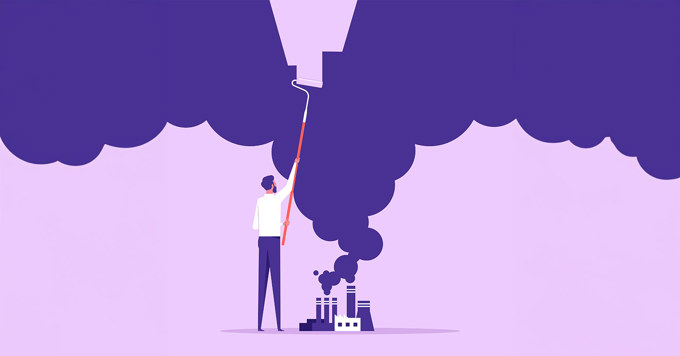Why is the price of Bitcoin so high? Is cryptocurrency here to stay? And what exactly is a “halving?”
Hubert Pun, Ivey Associate Professor of Management Science, answers these questions and more in Impact’s inaugural article in the Ask the Experts series.
Is blockchain the same as Bitcoin?
No. Blockchain is a technology and Bitcoin is an application of this technology. A block can contain anything (e.g., photo, video, files, etc.); these blocks are connected as a chain, hence the name blockchain.
Blockchain is a decentralized ledger technology. The "ledger" is the list of financial transactions. For example, your bank account is a list of financial transactions kept by your bank. There is only one copy of the database, which the bank maintains. You trust the integrity of this information because you trust your bank.
Bitcoin is a list of financial transactions without the need for a bank. There are approximately 18,000 identical copies stored in various places. If one copy is compromised, then it will be rejected by the majority of the network members (majority rule). You trust the integrity of this list of financial transactions because it is virtually impossible to simultaneously change more than 51 per cent of these copies.
Over the past six months, the price of Bitcoin has risen dramatically. What do you feel is contributing to this gain?
There are more adoptions of Bitcoin in the last few years. As an example, Microsoft, Burger King, and the Dallas Mavericks accept Bitcoin. Even Tesla once (around 2021) allowed customers to use Bitcoin. The game changer of mainstream Bitcoin adoption was when the U.S. Securities and Exchange Commission (SEC) approved exchange-traded funds (ETFs) around January 2024. To illustrate, Bitcoin was traded at CAD $55,000 around January 2024 and is now at CAD $97,000.
Is Bitcoin environmentally friendly?
Bitcoin mining is not environmentally friendly. Specifically, the Bitcoin mining procedure both validates the authenticity of transactions and generates new Bitcoins. Bitcoin miners harness sophisticated skills to unravel complex algorithms, such as predicting a random number correctly. The first miner who successfully finds the correct solution is rewarded with some Bitcoin. As of March 2024, the first miner is rewarded with 6.25 BTC.
The miners with more significant computing power have a higher chance of success. This means miners would invest in more powerful Bitcoin mining equipment to solve the challenge faster. If Bitcoin were a country, it would stand between Argentina and the Netherlands in terms of energy consumption. Also, this is more than Google, Microsoft, Apple, and Facebook’s energy consumption combined.
Can you explain what the upcoming Bitcoin halving is and why it’s significant?
The Bitcoin reward undergoes a halving process every four years. Halving is needed to reduce the rate of new Bitcoin issuance, promote scarcity, and control inflation. This gradual reduction ensures that no more than 21 million Bitcoins will ever be in circulation, establishing a deflationary monetary policy, promoting its value as a store of wealth and mitigating the risk of inflation.
So far, we have had three Bitcoin halvings: November 2012, July 2016, and May 2020. The next Bitcoin halving, expected to take place this month (April 2024), reduces the block reward from 6.25 to 3.125 BTC. Currently Bitcoin is traded at approximately CAD $97,000/Bitcoin, which means that each successful miner can receive CAD $606,000. Then, after the halving, each miner can receive CAD $303,000.
As the block reward decreases, some miners may choose to reduce their mining activity if the cost of production exceeds the rewards. Moreover, Bitcoin markets tend to experience increased volatility around halving events, which can lead to increased speculation.
Besides cryptocurrency, what are other uses of blockchain?
Cryptocurrency (e.g., Bitcoin/Ethereum) is one of the first applications. In and around 2017, blockchain was used to provide transparency and traceability to supply chain management (e.g., food supply chain). In the last few years, non-fungible token (NFT) became another application of blockchain. NFTs can certify the ownership and authenticity of a digital item (e.g., digital art, music, video game asset), so that digital item can be traded.
Should the public embrace cryptocurrency as something that is here to stay, or is it likely a passing fancy?
The digital world is here to stay; ChatGPT beautifully demonstrates the importance of mastering digital technology.
There is always a need for "maintaining trust" in business. Currently, the only way to have trust in a business system is through a centralized player (e.g., government official, bank, or lawyer). Cryptocurrency, and other applications of blockchain can address the "trust" issue without the need for a centralized player.
If you are interested in bringing cryptocurrency to life in the classroom, Hubert Pun has published a new Digital Learning Experience with Ivey Publishing, titled Royal Bank of Canada: Bitcoin Mining and Climate Change. The case discusses the definition of cryptocurrency, the Bitcoin mining process, energy consumption associated with the mining procedure, and the impact of Bitcoin mining on climate change.










